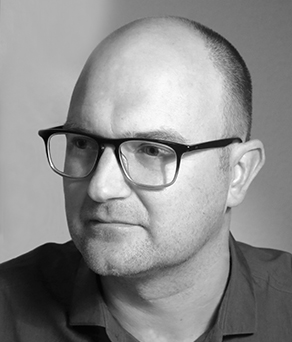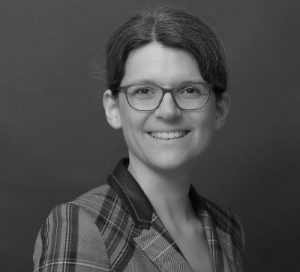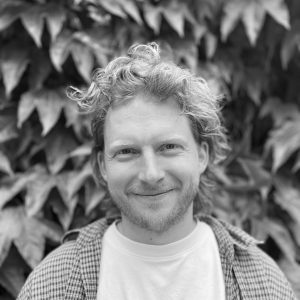ABOUT US
A planning office to promote urban biodiversity and urban nature
Studio Animal-Aided Design is a start-up company resulting from research projects on the role of animals for the design of open green spaces. Our aim is to implement the Animal-Aided Design (AAD) method into international planning practice, to promote biodiversity and urban nature within urban development, landscape architecture and architectural projects. The central idea of the Animal-Aided Design (AAD) method is to integrally plan the occurrence of animals as part of the design of open spaces. The practical experience of Studio Animal-Aided Design with the planning of animal-human relations in the context of the application of the Animal-Aided Design method shows that a new conception of urban animal-human relations, e.g. under the guiding concept of co-habitation, is socially possible and can find acceptance. Reasons for this include the adaptation of animal species to the environments of urban areas, the increasing acceptance of the occurrence of wild animals by urban residents and the importance of cities as areas of high biodiversity.

Thomas E. Hauck
Thomas E. Hauck is a landscape architect and completed vocational training as a gardener at the HBLVA for Horticulture in Vienna-Schönbrunn, followed by higher education in landscape and open space planning at the University of Hanover and the Edinburgh Collage of Art. He did his Ph.D. at the Technical University of Munich. He worked as assistant professor at the TU Munich at the department of landscape architecture and public space and as a research assistant at the University of Kassel at the Department of Open Space Planning. With the urban planner Cordelia Polinna he founded the planning office Polinna Hauck Landscape+Urbanism. Together with Susann Ahn, he holds the professorship for landscape architecture and landscape planning at the Institute for Urban Planning, Landscape Architecture and Design at the Vienna University of Technology.

Wolfgang W. Weisser
Prof. Wolfgang W. Weisser, D.Phil (Oxon), is a biologist and holds the Chair in Terrestrial Ecology at TUM. He completed his D.Phil. in Zoology at Oxford University and worked as a postdoc at Imperial College London and the University of Basel, Switzerland. From 1999 to 2011 he worked as Professor of Terrestrial Ecology at the University of Jena, Germany. He has worked extensively on land use effects on biodiversity and insect ecology. With Thomas Hauck, he developed the method Animal-Aided Design to bridge the gap between conservation and landscape architecture.
Wolfgang W. Weisser
Prof. Wolfgang W. Weisser, D.Phil (Oxon), is a biologist and holds the Chair in Terrestrial Ecology at TUM. He completed his D.Phil. in Zoology at Oxford University and worked as a postdoc at Imperial College London and the University of Basel, Switzerland. From 1999 to 2011 he worked as Professor of Terrestrial Ecology at the University of Jena, Germany. He has worked extensively on land use effects on biodiversity and insect ecology. With Thomas Hauck, he developed the method Animal-Aided Design to bridge the gap between conservation and landscape architecture.


Christine Jakoby
Christine Jakoby graduated as Diplom Ingenieur in landscape architecture at the Technical University of Munich in 2009. From 2010 – 2016 she was working and living in London, where she obtained the status Chartered Landscape Architect of the British Landscape Institute in 2015. Since 2016 she has been working at PolinnaHauck, Landscape+Urbanism in Berlin. From 2017 – 2019 she worked as research assistant at the University of Kassel on the state funded research project “Animal-Aided Design in the residential environment”.
Qingyu Liang
Qingyu Liang is a landscape architect and successfully completed a four-year degree in landscape architecture at Nanjing Forestry University in 2014. During this time, she worked at the office U.K. AREARFEI in Shenzhen. In 2017, she graduated with a Master’s degree in Landscape Architecture from the University of Kassel. Since 2018, Qingyu has been working as an employee at the planning office Polinna Hauck Landscape+Urbanism, and since 2022 she has been working for Studio Animal-Aided Design. She has also been registered as a landscape architect with the Berlin Chamber of Architects since June 2022.


Ariane Mutzel
Dr. Ariane Mutzel studied Biology at the LMU Munich and Lund University focusing on Behavioral Ecology and Zoology. She wrote her PhD thesis at the Max Planck Institute for Ornithology in Seewiesen and worked for 4 years as a post-doctoral researcher for the University of Kentucky in the United States. Her research focuses on the behavioral ecology and parental behavior in song birds. In 2021 she started working for the Studio Animal-Aided Design.
Beate Piecha
Beate Piecha is a biologist. She completed her studies at the University of Bayreuth and as an Erasmus student at the University of York in Great Britain, with a focus on botany. Before her studies, she did a vocational training as a gardener, specialising in ornamental plants/shrubs in Heilbronn. After her studies, she worked at the CABI Fungal Research Institute in Egham, Surrey in the UK and at the Botanical Institute of the University of Basel, Switzerland.
Paul Wiegand
Paul Wiegand is studying Urban and Regional Planning (M.Sc.) at the Technical University of Berlin. After completing his bachelor’s degree in urban planning, he worked at the planning office S.T.E.R.N. Gesellschaft der Behutsamen Stadterneuerung mbH from 2022 to 2023. Paul has been supporting the Animal-Aided Design studio as a student since August 2023.

PRESS
July 31, 2020: MDR Wissen, Podcast Meine Challenge: Animal-Aided Design, Wilde Tiere und Stadt – das geht, Podcast by Daniela Schmidt. hear podcast
June 4, 2020: Das Haus: Artenvielfalt in der Stadt, Interview with Wolfgang W. Weisser and T. E. Hauck by Louis Saul. read interview
October 24, 2019: Baunetzwoche: Spinne, Spatz und Fledermaus – Mehr Wildnis in der Stadt (in German), Interview with T. E. Hauck by Adeline Seidel. read Baunetzwoche, Issue #544
September 25, 2019: Fluter – Magazin der Bundeszentrale für politische Bildung: Mut zur Lücke (in German), Report on Animal-Aided Design by Natascha Roshani. read the report
July 5, 2019: Frankfurter Rundschau: Wohnraum-Mangel: Schafft Platz für den Spatz, Report on Animal-Aided Design by Markus Wanzeck. read the report
June 11, 2019: Landscape Architecture Magazine – The Magazine of the American Society of Landscape Architects: Creature Comforts – A landscape architect and a biologist team up to counter urban biodiversity loss, Report on Animal-Aided Design and Interview with Thomas E. Hauck and Wolfgang W. Weisser by Nate Berg. read the report and interview
February 11, 2016: form Design Magazine 264: Städte der Zukunft – Animal-Aided Design by Carl Friedrich Then. read the online magazine
May 16, 2015: Der Spiegel: Neubau mit Staubbad by Julia Koch. read the article


